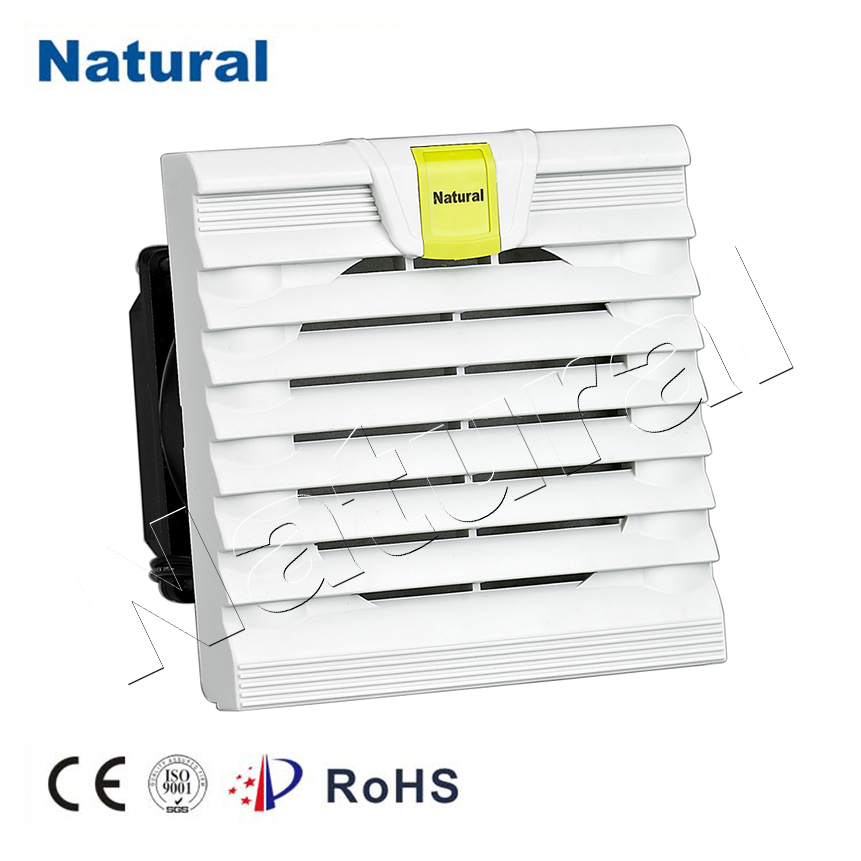In the realm of electronics and industrial applications, managing heat and maintaining clean environments within cabinets and enclosures is paramount. Two commonly used solutions for achieving this are cabinet fans and filter fans. While both serve the purpose of temperature control and dust protection, they have distinct differences and advantages. In this article, we will explore the nuances of cabinet fans and filter fans to help you make an informed decision for your specific requirements.

Cabinet Fans: Cooling Powerhouses Cabinet fans are essential components for dissipating heat generated within electronic cabinets or enclosures. They operate by expelling hot air from the enclosure and drawing in cooler air from the surroundings. These fans come in various sizes and configurations, making them suitable for a wide range of applications. One significant advantage of cabinet fans is their ability to provide efficient cooling in environments where temperature control is critical. They are particularly useful in applications with high heat loads or where electronic components are densely packed. Cabinet fans excel at maintaining a stable internal temperature, which is crucial for the longevity and performance of sensitive electronic equipment. Another advantage of cabinet fans is their ease of installation. They typically require minimal modifications to the enclosure, making them a cost-effective choice for retrofitting existing systems. However, it’s essential to ensure proper placement and airflow design to achieve optimal cooling. Filter Fans: Clean and Cool Filter fans, on the other hand, focus not only on temperature control but also on maintaining a clean environment within cabinets and enclosures. These fans are equipped with both a fan unit and a filter element. The fan unit draws in outside air, which is then filtered before entering the enclosure. This dual function makes filter fans ideal for applications where dust, dirt, or other contaminants pose a significant threat to electronic components. The primary advantage of filter fans is their ability to prevent dust and particles from entering the enclosure. This feature is particularly crucial in industrial settings, where airborne particles can lead to equipment failures and reduced lifespan. Filter fans ensure that the internal environment remains clean, reducing maintenance and the risk of costly downtime. Filter fans are also versatile and can be customized to meet specific filtration needs. Different filter materials and classes are available, allowing users to tailor the solution to their unique requirements. Additionally, filter fans are energy-efficient because they only operate when necessary, thanks to their thermostat or humidity control options. Choosing the Right Solution Selecting between cabinet fans and filter fans depends on the specific needs of your application. Here are some key factors to consider: Temperature Control:If your primary concern is managing heat within the enclosure, cabinet fans are a reliable choice. They excel at maintaining optimal operating temperatures for electronic components. Dust and Contaminant Protection:If your environment is prone to dust, dirt, or other contaminants, filter fans should be your preferred option. They ensure a clean and dust-free interior, reducing the risk of equipment damage. Energy Efficiency:Filter fans, with their automatic control options, are generally more energy-efficient. If energy conservation is a priority, consider this option. Space and Installation:If you have limited space or want a simple retrofit solution, cabinet fans are easier to install. Filter fans might require more significant modifications to the enclosure. In conclusion, both cabinet fans and filter fans play essential roles in maintaining optimal conditions within cabinets and enclosures. Your choice should be driven by your specific requirements, considering factors like temperature control, dust protection, energy efficiency, and installation constraints. By making an informed decision, you can ensure the longevity and performance of your electronic equipment while keeping it cool and clean.